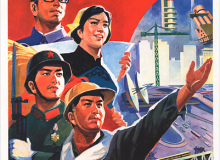Who Are You in Reform-era China?

Between 1976 and 1989, the People's Republic of China transformed dramatically. The political and economic battles over exactly how that transformation would look were just as dramatic, and this quiz lets you find out what your opinion would have been from one of nine options. It was more complicated than you might think!
All of the answers are based on real opinions from the time period; every question has at least one answer that was chosen by the government historically. Some might need some more knowledge than others: politics is complicated! Are you a supporter of Socialist Legality? Do you trust Deng Xiaoping or Hua Guofeng to lead the country forward? Do you miss the days when Mao was in charge, or hope China can become a liberal democracy?
